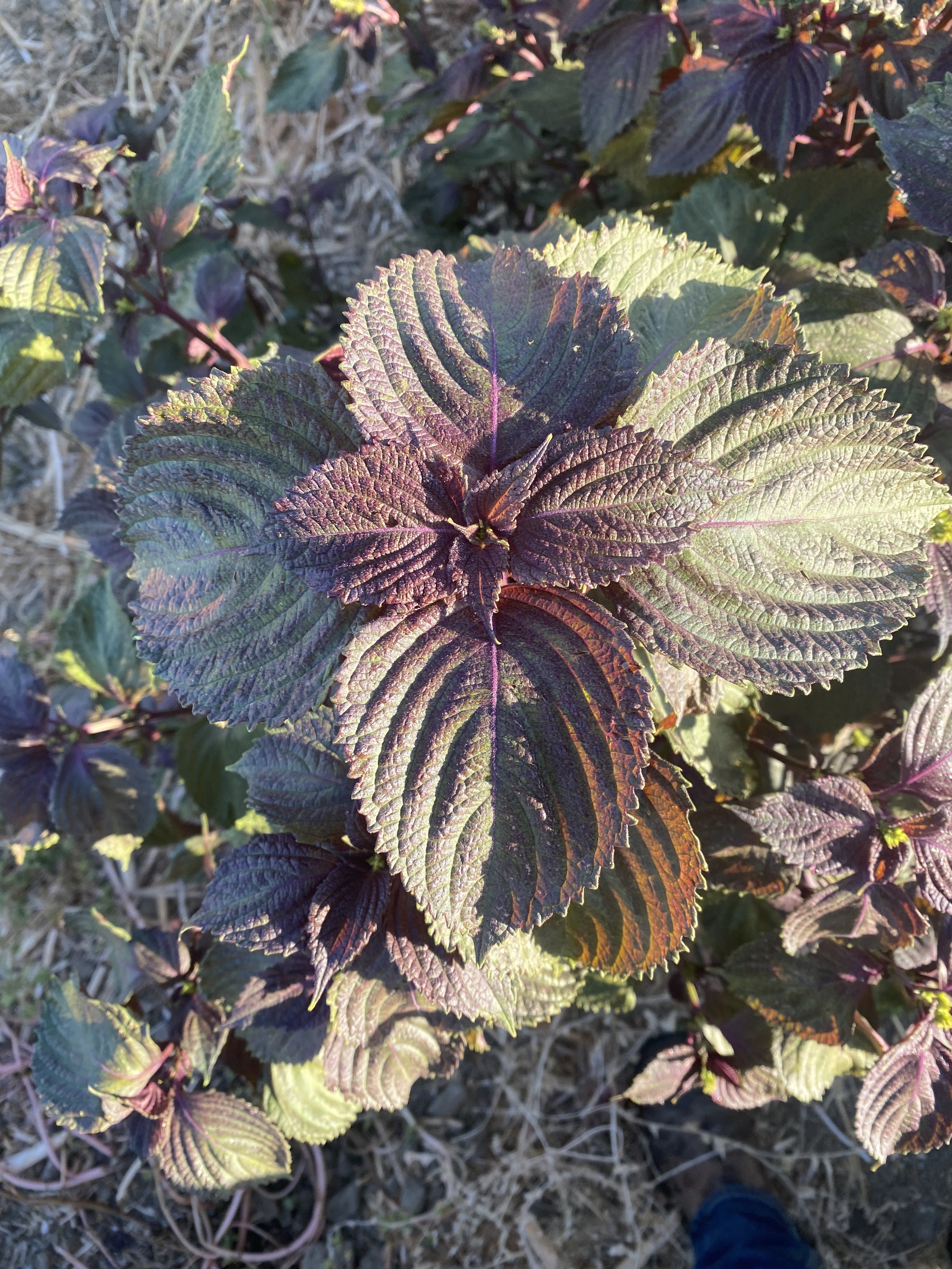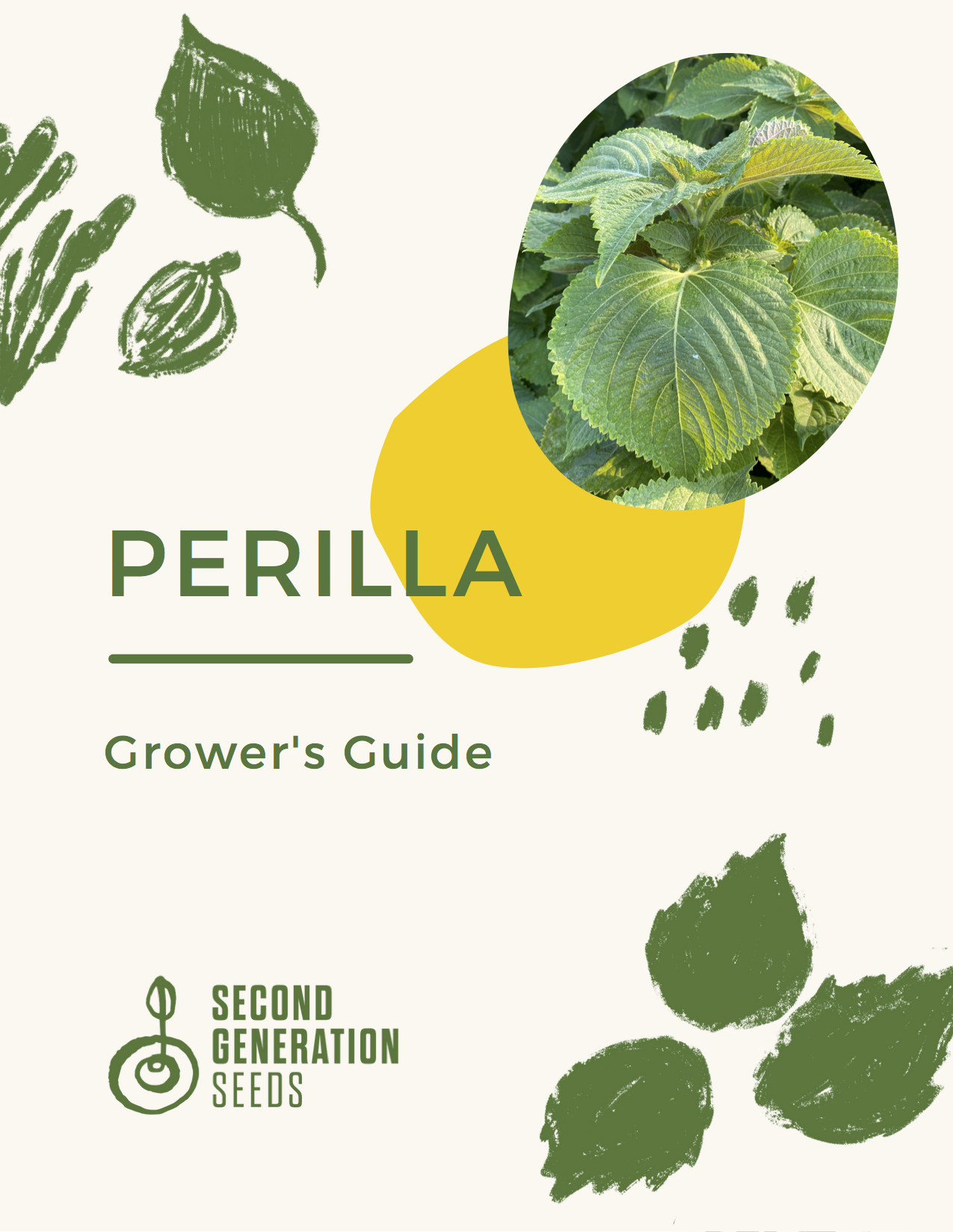Cha Jogi
Cha Jogi, Cha Soyeop, 차조기, 차소엽, Aka Shiso, 赤紫蘇, Zisu, 紫蘇, Red Perilla
Perilla frutescens var. acuta
Approx. Seeds per Packet: 100
A wilder form of red perilla, native to the mountains of Korea, Japan and China. Considered a fundamental plant in Traditional Chinese Medicine, all parts of the plant are used. Iridescent, purple red, slightly crinkled leaves.
This Korean red perilla is breathtakingly beautiful. Leaves are medium sized, variegated green on top with deep iridescent red undersides. Rich in perilla anthocyanin, this PA chemotype of perilla is an essential herb in Chinese medicine. It's medicinal benefits have made this plant indispensible, uses include: preventing shellfish poisoning, balancing one's qi, reducing inflammation, tonifying the lungs, boosting the immune system, and preventing the spread of HIV-1 cells. While in Korea it's mostly seen as a weedy relic, reserved for medicinal purposes, the leaves are still delicious when used as a fresh herb. Seeds are smaller and harder than kkaennip, and plants in general are a little more compact.
Days to Maturity: 70 days from emergence to harvest leaves. Flowering depends on daylength shortening, and so will vary based on your location. Seeds mature about 5 weeks after flowering begins
Growing Tips: Perilla is a day length sensitive plant, meaning it grows vegetatively with the lengthening days starting around the spring equinox (March-May). It flowers in response to short days, between the summer solstice and fall equinox.
When to Plant: Direct seed after threat of frost has passed, or start seeds indoors 3-4 weeks prior to field planting date. Optimal germination temperature is 65-70F
Planting Depth: Surface sown and gently tamped in. They need light to germinate, so be careful to not cover too much. If starting indoors, either broadcast into open trays then pot up into 2" pots, or use 50-cell seedling trays.
Spacing: 2’ between plants is ideal for healthy vigorous growth, and seed maturation.
Sun: Full to partial. When grown in the shade, leaves will be more tender, but may not have as intense coloring on the undersides.
Water: Moderate. Deep, infrequent waterings. Avoid oversaturation of soil.
Grower: Namu Farm, Winters, CA





